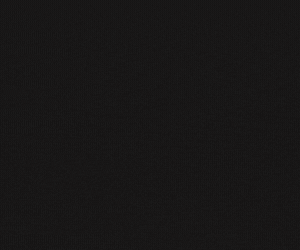Just outside the wrestling ring, eight eager people – men, women, and a kid – are cracking leather belts loudly against the mat, impatient for someone to use them on.
 Inside the ring, in a Westside Fort Worth warehouse, two wrestlers, Tyler Maverick and Junior Garza, do their choreographed arm-twisting and face-smashing, loudly thwacking shoulders and backs onto the canvas. The slap of the belts is like bizarre background music to the action in the ring.
Inside the ring, in a Westside Fort Worth warehouse, two wrestlers, Tyler Maverick and Junior Garza, do their choreographed arm-twisting and face-smashing, loudly thwacking shoulders and backs onto the canvas. The slap of the belts is like bizarre background music to the action in the ring.
Those holding the belts have just won a raffle: They plunked down a dollar for a chance to whip any wrestler who gets thrown out of the ring. And because this is professional wrestling – in direct lineage from Gorgeous George and the Von Erichs and Hulk Hogan – you know that someone is going to get thrown out of that ring, to the mercies of the belt-wielders, who are also their fans. It’s all part of the script.
There are a few rules for the fans. No hitting in the head and no hitting with the buckle. The fans are supposed to stay on their designated side of the ring (two per side), though that idea quickly disintegrates. When one wrestler gets thrown out, all eight run to where he lands.
“Throw Junior out, Tyler, so my wife can beat his ass,” yells a tattooed and bandanna-wearing man from the audience.
And just like that, Garza gets thrown over the ropes, and Jennifer Jackson of Fort Worth begins whipping his bare back with her white belt and laughing maniacally. Her four kids, ages 3 to 9, yell encouragement from the front row. “Hit him, Mommy,” they scream.
Garza gets back in the ring, his back red with welts. Soon after, it’s Maverick who gets thrown out, and the mob once again descends. Then the referee gets thrown out and whacked as well. At one point a third wrestler, Red Wing, who had fought in a previous match, holds Maverick while a 9-year-old whips him on his bare chest.
Eventually, Maverick and Garza get back in the ring, Maverick pins his opponent, and both roll around on the canvas in obvious pain. The crowd of about 60 cheers loudly as the men display the angry red stripes on their bodies. The promoter of this event, Chuey Martinez, a former wrestler himself, yells into the microphone, “Wasn’t this a great idea?”
Is Jackson worried about the violent and perhaps bizarre behavior she’s modeling for her kids? Nah. “They know it’s part of the show, and no one really gets hurt,” she says.
But they do get hurt. Maybe not as badly as a football player suffering a concussion or a wrecked knee, but any professional wrestler will tell you that the high-flying body slams and knees to the head are painful and sometimes cause serious injuries.
What about the mother of 9-year-old whip-wielder Cameron Shaver? No problems there either. “He really likes wrestling,” says Sandra Shaver of Kemp. “He really didn’t hit them hard. It’s just a part of the show.”
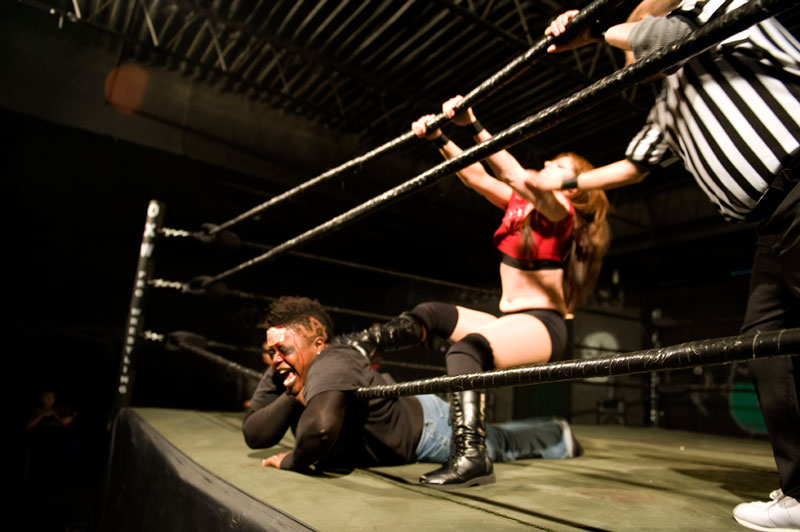 Professional wrestling has always been about the show. These are character actors in some respects, trained athletes with the ability to do back flips off the ropes onto their opponents. They play to the crowd, yelling and screaming at fans young and old, who yell back “you suck” ad infinitum.
Professional wrestling has always been about the show. These are character actors in some respects, trained athletes with the ability to do back flips off the ropes onto their opponents. They play to the crowd, yelling and screaming at fans young and old, who yell back “you suck” ad infinitum.
But when does this lowbrow performance art cross the line? Is allowing a wrestler to be whipped by a little kid really just “part of the show” on a Friday night in Cowtown?
If you think belt-whacking goes too far, then the final bout at the Outcast Xtreme Wrestling (OXW) arena the previous Saturday wouldn’t have been for you either. Maverick and Garza staged a staple-gun match, where the first wrestler to staple seven dollar bills to his opponent’s body won. Not much blood, but still very hard to watch so close up.
Maverick won that one as well. He managed to staple three dollar bills to Garza’s forehead, one to his chin, one to his crotch, one to his back, and one to his butt.
Maverick had six, on various parts of his anatomy. It was a very close match.
Curtis Hankins, 77, of White Settlement, is sitting in the front row at the OXW with his grandson, Jonathan Hankins, 13. The black wooden walls sport a barbed-wire design. White skulls are painted around the edges of the wrestlers’ entrance, where competitors emerge from a mist of fog and laser lights. “She’s My Cherry Pie” blasts from the speakers.
“I was raised up in this,” Curtis Hankins says. “Been seeing these wrestling matches since I was a kid. You could always see who was the better man.”
Then he looks at his grandson. “Maybe one day he‘s going to be one,” he says.
Jonathan is a big fan. He learned of the OXW wrestling (which started in August) through a flier at a convenience store. “I told my grandfather about it, and we’ve been coming here every Saturday night,” he says. His favorite part is “how they are always talking and yelling at you and how much fun it is to yell back at them.”
Professional wrestling has been around since the mid-1800s in this country, when carnival operators set up exhibition matches between wrestlers who traveled around the country. From the beginning, they created characters and wore costumes to draw bigger crowds. Taunts traded between the wrestlers and the crowd have always been part of the action.
By the 1950s, television had entered the picture, and Gorgeous George became a national celebrity. But since then professional wrestling has had its ups and downs. Hulk Hogan helped make the ’80s an “up” decade. Since then, despite the televised matches of World Wrestling Entertainment (WWE), the sport’s fortunes have declined slightly, measured by overall audience numbers. Part of this has to do with the popularity of mixed-martial-arts cage matches, which have siphoned off some of professional wrestling’s fan base.
But the biggest hit in professional wrestling has been taken by the local venues, which found they couldn’t compete with national organizations like WWE. In the 1960s, Dallas professional wrestler Jack Adkissson, known in the ring as Fritz Von Erich, began booking wrestling shows in the Dallas Sportatorium. By the 1980s, with Adkisson’s sons also featured in matches, the Sportatorium was the place to be for North Texas wrestling fans.
Adkisson’s organization became known as World Class Championship Wrestling and booked events at the Will Rogers Memorial Center in Fort Worth. But the 1990s saw a big decline in the local wrestling circuit, and by the end of that decade, wrestling in the Sportatorium and in Fort Worth was pretty much gone.
 “The Sportatorium and Will Rogers were just so fantastic when I wrestled back then,” said Mike Savage, 40, a partner in the OXW business, who still gets in the ring occasionally. “We were as big as high school football in Texas, and the fans were really into it.”
“The Sportatorium and Will Rogers were just so fantastic when I wrestled back then,” said Mike Savage, 40, a partner in the OXW business, who still gets in the ring occasionally. “We were as big as high school football in Texas, and the fans were really into it.”
But Savage, a longtime wrestler, also witnessed the decline in the local scene. The rise of WWE on TV, plus pay-per-view fights, then MMA, video games, and more entertainment choices hurt the sport, Savage said. In Texas, he said, the demise of some of the big federations has led to smaller and weaker organizations.
There has been a small uptick in local wrestling venues in Texas in the last few years. About 50 smaller sites like OXW promote the sport, with events mostly confined to weekends, and trained wrestlers ride the circuit like their forebears did in the carnival days. They don’t make much money. One wrestler, who didn’t want his name used, told Fort Worth Weekly that he rarely makes enough to cover expenses if he travels to San Antonio for a match.
“Three-fourths of the wrestlers out there don’t do it for the money,” said Fort Worth personal trainer Kevin Frazier, 30, who wrestles under the moniker Modern Day Hero Red Wing. “But nobody in sports loves their fans more than pro wrestlers. Other pro athletes don’t care.”
Frazier has been wrestling for 10 years and estimates he has fought in 800 matches. He doesn’t see a problem with the new levels of violence, like staple guns and belts. “Honestly, what we do is up to the fans,” he said. “They decide what is acceptable. Promoters let them know what is coming up, and the fans decide if that is what they want or if that is something they don’t want their kids to see.”
The Outcast Xtreme Wrestling arena on Camp Bowie Boulevard West isn’t the only venue in town going after the local wrestling market. Victory Crown Championship Wrestling began presenting matches at the Ridglea Theater hard-rock club a few months ago. The events are slated only once every four to six weeks; the next one is Jan. 15.
Wrestling at the Ridglea is somewhat different from the offerings at OXW. Promoter Jason Keenan schedules six or so matches in an evening, followed by a few local bands. This leads to an odd crowd. Some are there for the wrestling, others for the music, and the two don’t seem to mix well.
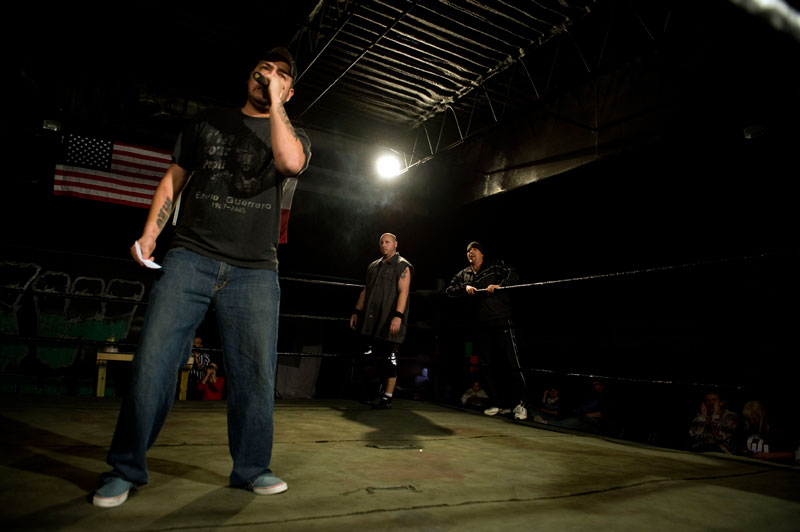 Ruben Hernandez of Fort Worth, 18, was at the recent Ridglea event with his friend, Juan Olivera, 16, a sophomore at Eastern Hills High School. They came for the wrestling and said they might hang around a little while to hear the bands.
Ruben Hernandez of Fort Worth, 18, was at the recent Ridglea event with his friend, Juan Olivera, 16, a sophomore at Eastern Hills High School. They came for the wrestling and said they might hang around a little while to hear the bands.
“I’ve been a fan of this since I was a little kid,” Hernandez said. “The way they do this is like performance art. They are telling us a story with their bodies. It’s like Shakespeare. They build characters. It’s a soap opera with a motive.
“I wish I could do this someday,” he said. “Mixed martial arts is about people trying to hurt each other. It is too graphic for me. This is about people acting and using their bodies in amazing ways. There is nothing like it.”
While Hernandez was talking, a wrestler named Manimal entered the ring. He’s a bearded gent, dressed in fur like a caveman, whose shtick includes gnawing on a large bone.
Keenan, 35, a former bass player in bands and also the former owner of a tree service company (which he sold recently), has the same view of wrestling’s artistic merits as Hernandez. “We are doing entertainment, but this is not a Hollywood movie that wants to get the mass audience,” he said. “We are like independent cinema.”
Before the December show at the Ridglea, the wrestlers spent a few hours choreographing their moves. It was a “you do this to me, and then I do this to you,” sort of thing. Even though it’s common knowledge that outcomes are predetermined, it was somewhat strange to see the wrestlers out of costume arranging who would fall when and who would win.
It’s “just like actors rehearsing a play,” Keenan said. “If you go to a play at a theater, they have a script and they follow it. You know the outcome of the play is predetermined, but you are still entertained, watching it unfold. This is entertainment, and we put on the best show we can.”
The wrestling at the Ridglea is more old school. Keenan said he doesn’t want the violence and gore of OXW. “When the audience thinks they are going to an R-rated movie and it turns into porn, they get offended,” he said. “And once you go that far, you can’t go back. That is not the type of wrestling we are interested in producing.”
But the two venues do share “actors.” Manimal and Red Wing, for instance, have fought at both venues recently. Neither Keenan nor OXW’s Martinez objects to that, even though their clubs are competitors. “We are all about getting these guys some work, and everyone gets better if they work more,” Martinez said.
Martinez doesn’t completely disagree with the assessment that old-school wrestling is important, but he says that the wrestling community must keep up with the times. “We have some old-school fans, and then we have some younger fans who expect something different,” he said. “My whole thing is to get the fans here and have them expect to get the unexpected.”
Martinez, 26, of Lake Worth, wrestled for 11 years. He is the ringside announcer, but occasionally he jumps in and gets a few body slams. A dynamic personality, he gets the crowd yelling and screaming before the first body hits the mat.
Before the belts or staple matches, Martinez gets on the mike and warns the crowd what will happen next. Parents have the choice of getting their kids out, but none do. Some kids even participate.
If a person went after someone else with a belt out on the street, he or she could be charged with assault. But doing it as part of a wrestling show doesn’t cross that line, at least according to one local law enforcement officer. The wrestlers are willing participants and sign contracts agreeing to the belt-bashing. The fans have chosen to get involved by entering the raffle.
The prospects for local promoters and wrestlers actually making a financial success out of their sport seem dicey at this point. The Ridglea drew about 180 at its December show, Keenan said, and 40 of those folks got in free. OXW had fewer than 100 fans in the house on each on two recent Saturday nights. Both promoters charge a $10 cover. Those numbers mean that neither venue is breaking the $1,000 revenue barrier per event, and both promoters have to pay more than a dozen wrestlers and lease their buildings. So unless they add more shows, expand to places like Dallas and Denton, or get into larger venues, it seems unlikely these new local wrestling shows will last long.
Martinez, who was born and raised in San Antonio, is undeterred. “Wrestling in Texas has always been huge, and that market hasn’t been served in recent years,” he said. “What we are doing is giving people a place where they can sit very close and get to know these wrestlers in a personal way.
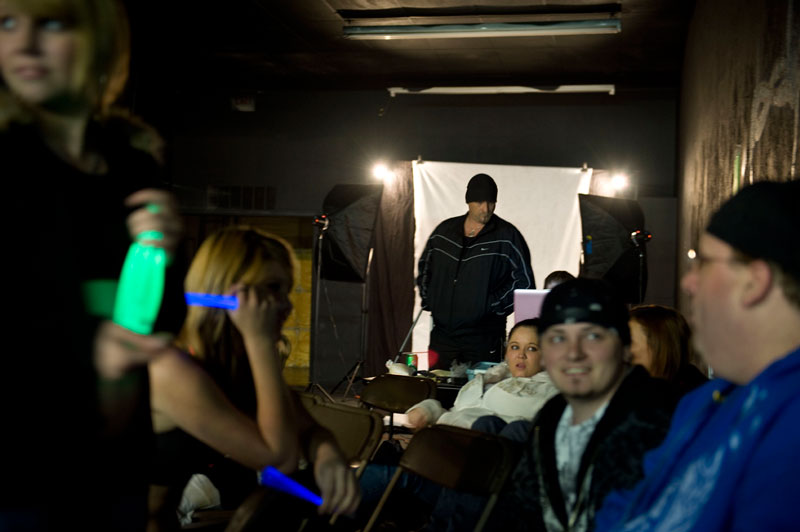 “Mixed martial arts has ramped everything up,” he said. “They make us work harder for this market. But it is all about the fans and the wrestlers. There is a bond at work, and that has never changed with wrestling through the years. That is what we are banking on.”
“Mixed martial arts has ramped everything up,” he said. “They make us work harder for this market. But it is all about the fans and the wrestlers. There is a bond at work, and that has never changed with wrestling through the years. That is what we are banking on.”
In his 22-year career, Mike Savage has sustained 16 major concussions and six skull fractures. He has broken ribs on both sides and suffered countless hip and knee injuries. At a recent tag team match at OXW, where he was paired with his 17-year-old daughter Taylor, Savage was slammed into the ring post and received a bloody forehead. He kept going as blood dripped down his face.
He doesn’t have a problem with his daughter going into the family business. “I love it to death that she is doing it,” he said. “She trained hard to learn this kind of wrestling, and she knows it is one form of an acting career. And that is what we are. We’re actors and stuntmen.
“This is a controlled environment for us,” Savage said. “Accidents happen sometimes, just as they do in other athletic contests. But everything we do is staged entertainment. Part of that is that we don’t cross the line to hurt our friends. We watch out for our partner, and he watches out for us.” By “partner,” of course, he meant the wrestlers’ ostensible opponents.
“More than anything this is about the fans,” he said. “They know this is a show and entertainment. Afterward, we meet the fans, and we are out of character. The fans know what this is, because they aren’t that stupid.”
Maverick, 20, of Dallas, is a certified personal trainer who has been wrestling only about six months, including the belt-and-staple matches at OXW. In terms of blood and gore in the ring, are there things he would not do?
“Yes, there is a lot of pain,” he said. “You really don’t feel it in the ring because there is such an adrenaline rush. But once you get in the dressing room, you can feel it. But we do this for the fans, to get them involved. And they get an adrenaline rush as well.
“What wouldn’t I do?” he pondered. “I guess I’m not a person who wants to get his head wrapped around with barbed wire. But I want to move up in this business, and sometimes you do things you might not have thought about before.
“When we do things like getting dollar bills stapled to us or getting hit by belts, we have calculated what will and will not happen,” the young wrestler explained. “All athletes put up with some pain, and this is what we do. It’s just that we have the pain more planned. It is not an accident waiting to happen.”
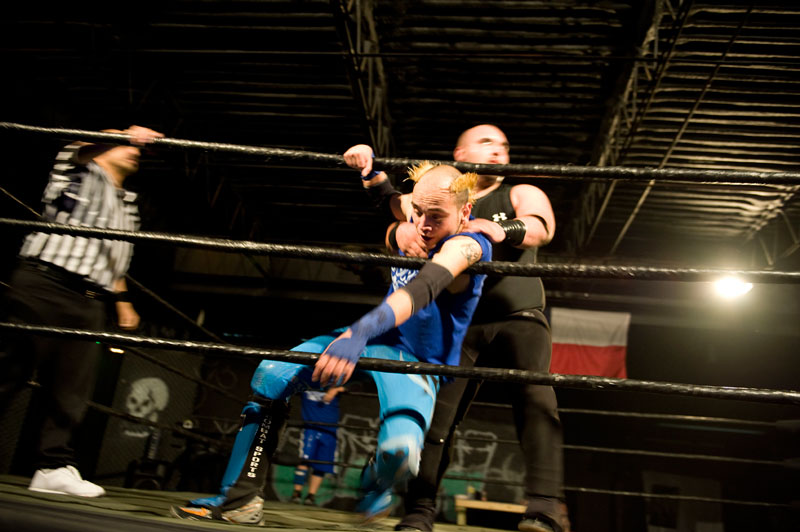 Becoming a wrestler is not easy. All fighters have to go through training classes, which run about $2,500 for three months. They learn how to fake punches and administer body-slams without hurting either themselves or their opponents. It is what Savage calls “teaching them to be athletes and actors at the same time.”
Becoming a wrestler is not easy. All fighters have to go through training classes, which run about $2,500 for three months. They learn how to fake punches and administer body-slams without hurting either themselves or their opponents. It is what Savage calls “teaching them to be athletes and actors at the same time.”
As for the matches being choreographed, with predetermined outcomes, the wrestlers and promoters know that talking about that isn’t good for the show. Maverick claimed that none of his matches are scripted. OXW’s Martinez hemmed and hawed and said the winner might be predetermined, but that the action leading up to that point is not.
Frazier (a.k.a. Red Wing) said the question of orchestration is not important. “Sure, things are orchestrated in a certain way but not all the time,” he said. “Sometimes I’m in a match where we know what is going to happen. Other times I’m in a ring with a guy who is trying to kill me, and I am fighting for my life.
“But we always play off the audience,” he said. “We feed off them and give them what they want.”
Kiki Marsh and Nikka McKelsey of Arlington are at the OXW on a Saturday night, cheering for their friend LaLa, a female wrestler who’s also from Arlington. On this night, LaLa is fighting Foxy Roxy, billed as being from Australia. LaLa suffered a cut on her forehead in a previous match, and a bandage is protecting the wound. But several minutes into the match, the blood starts flowing from underneath the bandage, dripping down her face, onto the canvas, and, as they fight, smearing Foxy Roxy’s legs and back.
But the fight isn’t stopped. “We leave that up to the fighters, and LaLa was never in any danger and wanted to continue,” Martinez says later.
For Marsh, it’s tough watching her friend grimace on the ropes with her face full of blood. “But she loves doing this so much, and we support her,” Marsh says. “And Foxy Roxy cheated. So we all figure LaLa won.”
Going to the wrestling matches at OXW is about “taking out all your aggression for the week and leaving it here,” Marsh says. “We yell at them, and they yell at us, and it is all in good fun.”
As she speaks, Mike Savage walks by and yells that the middle-age Marsh is “an old grandma with bad teeth. And your friend ain’t much better.”
Later Marsh gets to take out her week’s aggression as one of the belt-bashers. “That was a lot of fun, chasing them around the arena and hitting them,” she says. “No one got hurt, and we as the fans got to be involved. That’s why I love wrestling so much.”
Before the night is over, the OXW fans see the purple-haired Syre breathing fire before he enters the ring and hear Red Wing declare he is the “Protector of the Metroplex.” The 350-pound overall-wearing Bubba Dumplin enters the ring to “Thank God I’m a Country Boy” and later does an amazing back flip off the ropes onto his opponent. “The Smurf,” a little guy from San Antonio dressed all in blue, sports a maniacal grin as he flits around the ring.
And after each match, the fans mingle with the wrestlers, get their pictures taken with them, and get autographs. Whip them one minute, worship them the next – all part of the show.
About a year ago, the movie The Wrestler starring Mickey Rourke was released. Rourke plays an aging wrestler who had been famous in the 1980s but now is forced to fight matches in small clubs in New Jersey. In a match with the Necro Butcher (played by former Texas wrestler Dylan Summer), the staple guns are brought out, and a hard-to-watch scene of blood and gore unfolds. Most viewers probably figured this staple-gun death match was just a made-up Hollywood bit. But it is not, as evidenced by the match a few weeks ago at OXW.
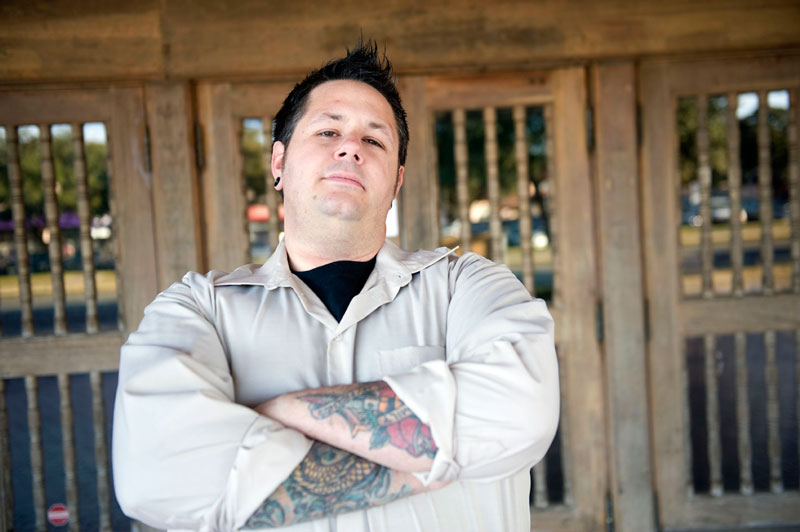 Hardcore wrestling has been around for more than a decade in various forms, with foreign objects being brought into the ring as weapons. Wrestlers might hit each other with fluorescent light tubes or baseball bats embedded with thumbtacks or whip each other with barbed wire. Some promoters even give the wrestlers Weed Whackers to use on each other.
Hardcore wrestling has been around for more than a decade in various forms, with foreign objects being brought into the ring as weapons. Wrestlers might hit each other with fluorescent light tubes or baseball bats embedded with thumbtacks or whip each other with barbed wire. Some promoters even give the wrestlers Weed Whackers to use on each other.
Last Saturday night at OXW, fans brought the weapons. No guns, knives, or Tasers were permitted, but Maverick and Garza used a bunch of other fan-supplied weaponry on each other: a big candy cane, hockey sticks, a broomstick, corkscrews, and even a chair studded with thumbtacks. There was a lot of back-and-forth hitting but not much blood. Garza won.
Will the wrestling shows at the Ridglea or OXW arena eventually recreate the old-school fights that once flourished at the Sportatorium? That is not likely to happen, given the competition for entertainment dollars and the current economic environment. But both Keenan and Martinez are giving it a shot.
“Young people want something different, and a lot of our fans are too young to even remember what the Sportatorium was like,” Keenan said. “So we are going to give them that, and I think they will latch onto this type of entertainment.”
Martinez agreed. “We are going to grow this carefully, but we know the market is out there,” he said. “We will bring in the best wrestlers and stay ahead of the game. This could blow up so big.”
You can reach Dan McGraw at
dan.mcgraw@fwweekly.com.



